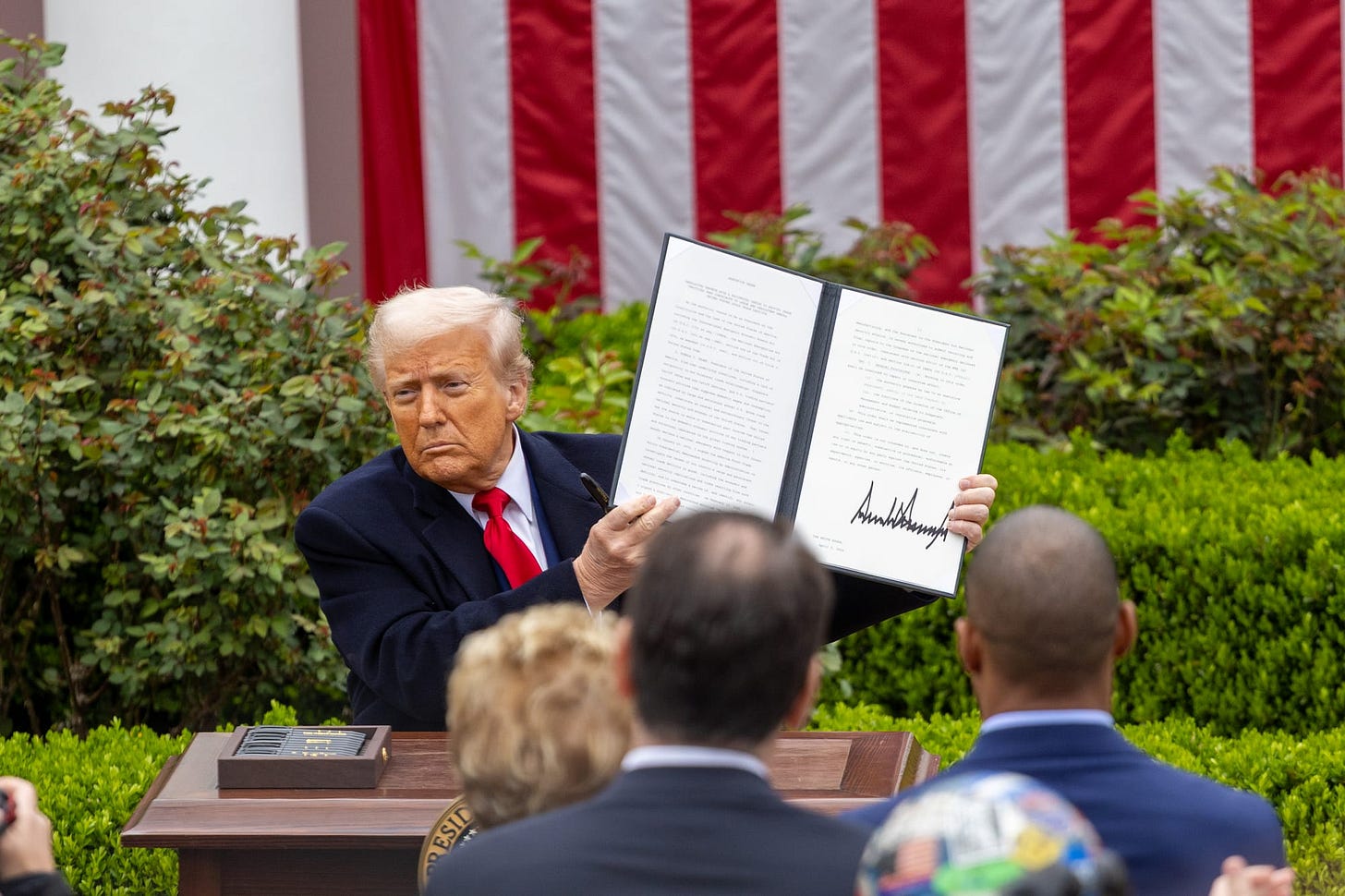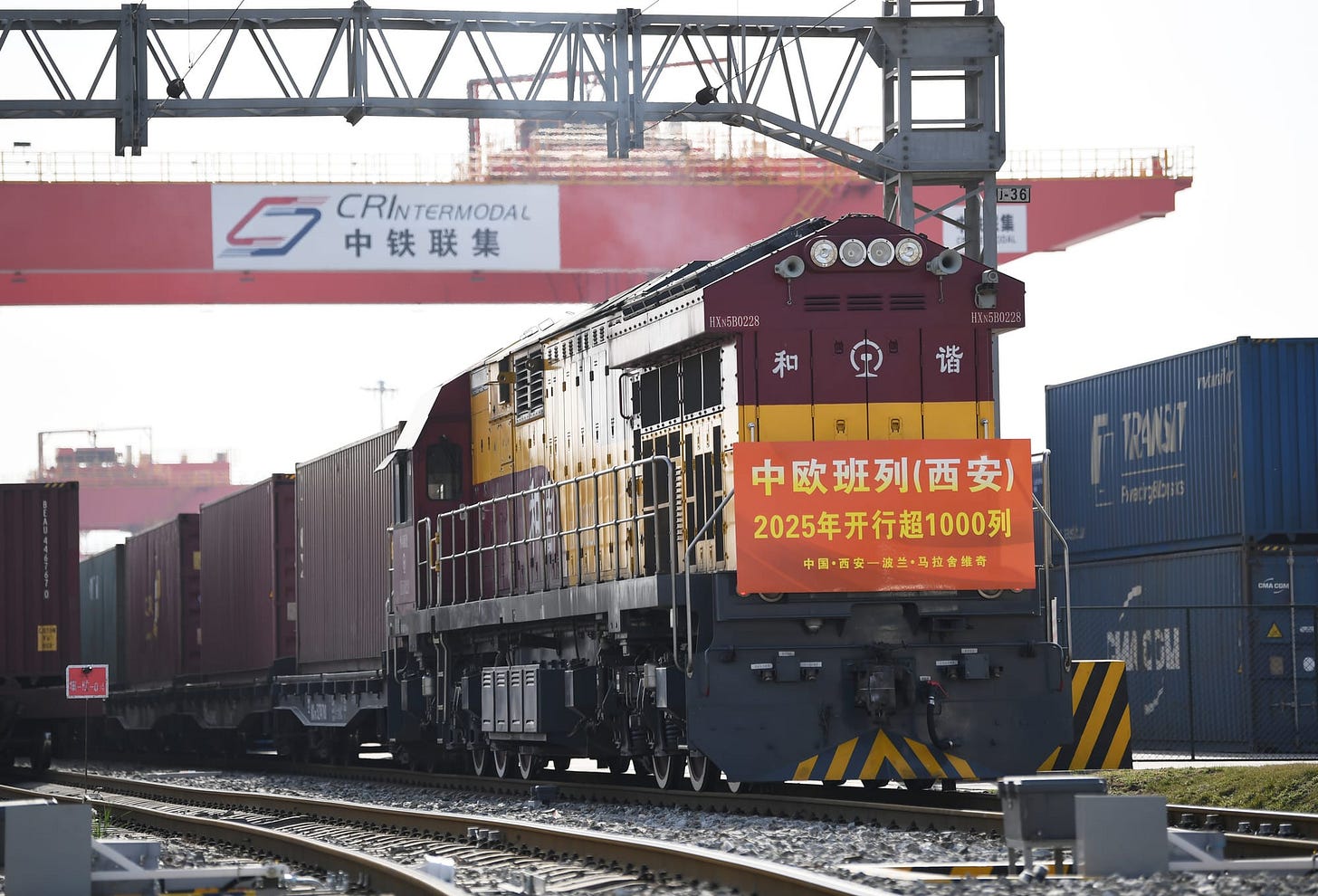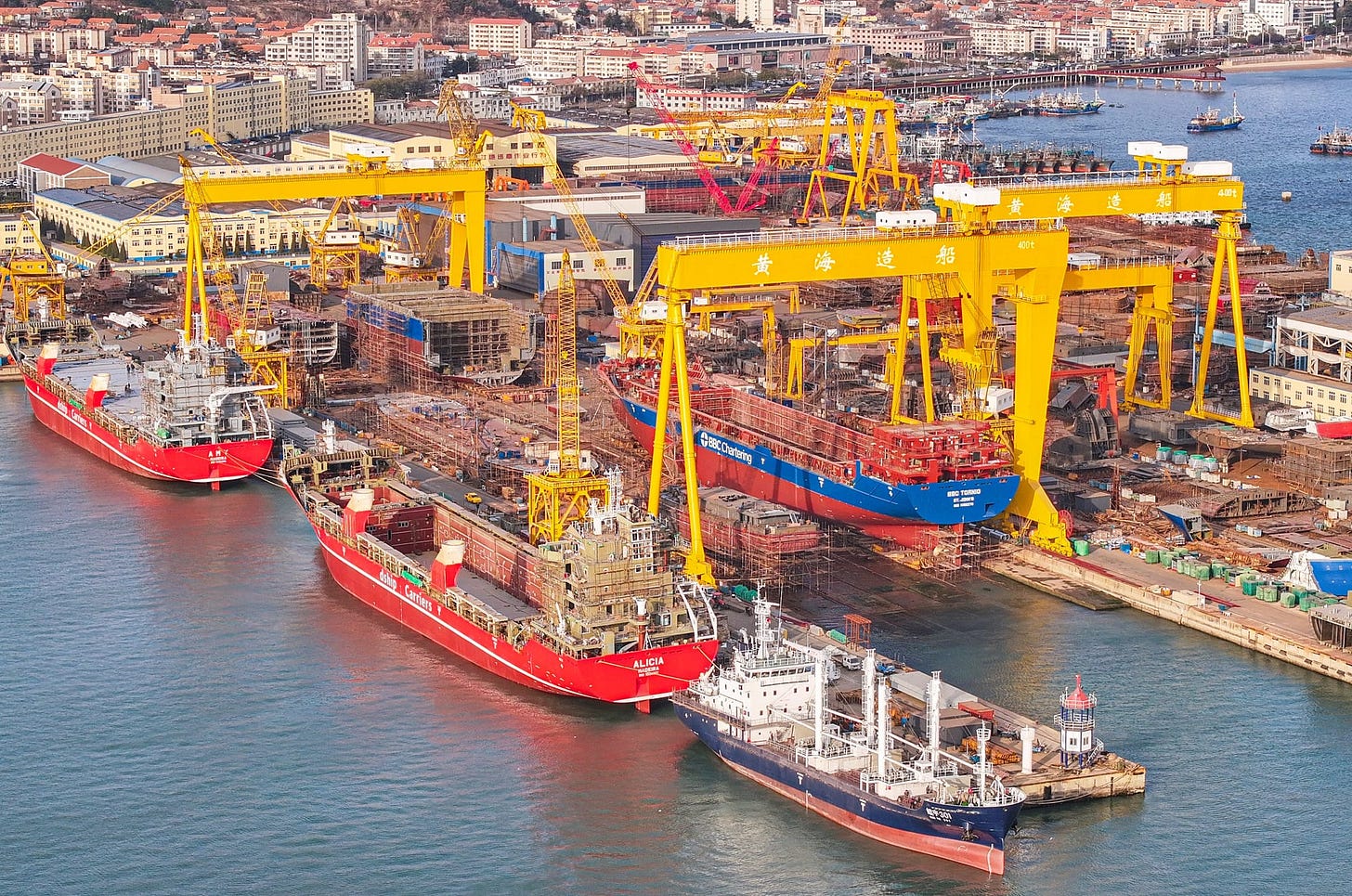Industry in China: Goals and Achievements of the Last Decade and Upcoming Challenges
China's unwavering and unquestioned commitment to advanced technology to solve virtually every problem will have profound consequences for China and the rest of the world.

Released in May 2015, the "Made in China 2025" (MiC2025) is Beijing's master plan for industrial policy. The plan set out to catapult China to the status of "manufacturing power by 2025" and make the country the industrial and innovation leader by 2049 when the 100th anniversary of the founding of the People's Republic of China will be celebrated.
Originally, China aimed to achieve world leadership within a decade in 10 key sectors: next-generation information technology (including semiconductors); numerically controlled machine tools and robots; aerospace equipment; high-tech shipping and ocean engineering; rail transportation equipment; energy-saving vehicle technology; new materials; advanced pharmaceuticals and medical equipment; agricultural machinery; and power generation equipment.
It contemplated increasing Chinese domestic content of basic materials to 40% by 2020 and 70% by 2025, which would strategically enable it to achieve greater independence from foreign suppliers for those products and services.
Roughly speaking, the strategy is equivalent to an import substitution plan, in varying percentages by sector. With the help of a wide range of policy tools, including research funding, tariffs, subsidies, market reservation, and tax exemptions, domestic producers aligned themselves with those objectives and mobilized at great speed.
Ten years on from the decision that sought to move China upstream and downstream in the Global Value Chains (GVCs) of products that have advanced technology, the country has met many of its goals, and at times far surpassed them. In robotics and electric vehicles, China has gone from being a minor player to the world's leading manufacturer and consumer. But that doesn't mean everything has gone according to plan, for the relationship between this MiC2025 and China's problems with the U.S. then and now, is absolute. A quick review.
Tension with the U.S.
In January 2017, on his first day in office, Trump signed the executive order to pull the U.S. out of the Trans-Pacific Partnership Agreement (TPP) and reported that he would tax imports from China at 45% in the wake of the U.S. trade deficit problem.
One year later (3/22/2018) in the Oval Room, Trump signed a presidential memo against "Chinese economic aggression". The strategy MiC2025 was mentioned 116 times in the report. The core of U.S. policy then was, as it is today and synthetically, to prevent China's technological escalation.
The sharp deterioration in relations with the West forced Chinese economic planners to redouble their efforts to achieve self-sufficiency, an objective that was not, in fact, a goal of the original MiC2025 plan. A look at the 14th Five-Year Plan, 2021, shows that much of the spirit of MiC2025 prevailed. The main industries were practically the same and the only one they added was biotechnology.

Perspective
While manufacturing has traditionally been a pillar of China's economic growth engine, as early as 1979, when China first allowed Foreign Direct Investment (FDI) into its territory, the country felt that excessive reliance on low-tech manufacturing (a pillar of China's early export drive) carried the risk of entrenching the country as dependent on foreign input. To get rid of this dependence has become a target of economic policy.
MiC2025 was a key tool in China's overall strategy of expanding its manufacturing capabilities of greater sophistication. The plan is not limited to creating more globally competitive domestic companies but seeks to create the conditions that will enable China to lead in the technologies that will define the future global economy. By following this policy direction, China is gradually succeeding in reducing its dependence on third markets (from which it brings inputs, including knowledge), while increasing their dependence on China.
A decade later, the basic tenets of MiC2025 have been adjusted, expanded, and repurposed to fit a broader spectrum of strategic industries, indicating that China will continue, with renewed ambition, many of the practices that the MiC2025 introduced or reinforced. That plan stood out from previous Chinese industrial policies for its ambitious market share targets, including a general one of achieving 70% in the domestic market for "core basic components and key basic materials" by 2025.
It also set specific technology targets, calling on domestic companies in its 10 key sectors to launch national versions of core technologies, with that decade as a horizon. In some cases, in order to close the technology gap quickly, strategic acquisitions of transnational companies were made.
Objectives and achievements
The overall objective of MiC2025 has been gradually aligned with China's new and latest policy priorities, namely "dual circulation" and the drive to achieve self-sufficiency in a wide range of sectors, as well as achieving self-sufficiency in scientific and technological infrastructure.
The most important of the documents at the start of the project (known as the "green paper") was drafted by a committee of China's top scientists and sets specific numerical market share targets and local content requirements that China was to achieve within five years first, and then ten.
Some of these figures were extremely ambitious. One example: in 2015 China produced less than 100,000 electric vehicles and almost none commercially competitive. The automotive industry could be among the clearest winners among the program sectors: today China dominates 57% of the global electric vehicle market, with a production of 6.3 million cars in 2024. For example, in March BYD sold more cars than Tesla.
Reports evaluating MiC2025 over its decade-long life agree that the plan has changed considerably over the years and that many key themes, such as self-sufficiency, commonly associated with the initial plan, were incorporated or strengthened over time, especially as relations with the West deteriorated.
Although some of MiC2025's sector-specific targets have not been achieved, its overall goal of further modernizing China's manufacturing sector advanced significantly. A lesser-known, but correlated success is the drastic growth in industrial robot installations. For example, in 2024 China surpassed Germany in the number of industrial robots per 10,000 workers, meaning that China's level of industrial automation is higher than that of any European country. Globally, the density of robots in factories has more than doubled since 2015, but in China that density shot up 2,400% between 2015 and 2023.
Since 2015, more Chinese companies in MiC2025 sectors have become global leaders, such as in shipbuilding: in 2024, Chinese shipbuilders cornered 70% of global new orders.
In 2024, Chinese shipyards built more than half of the world's new shipbuilding capacity, and a single Chinese shipbuilder, the China State Shipbuilding Corporation (CSSC), built more ships in 2024 in tonnage than the U.S. has since WWII. They also channeled investment into high-tech ships and maritime equipment, such as deepwater oil rigs, deepwater oil platforms, icebreakers, and methane carriers. And it seems to have worked because in 2023 China led in orders for 14 of the 18 major ship types. China's share of the global EVs market increased to 76%; Chinese solar panels accounted for more than 80% of the global market share.
Challenges and costs
But in turn, the implementation of MiC2025 has generated a series of challenges and negative externalities from the point of view of companies from the West that competed or attempted to compete in the Chinese market.
These criticisms quickly turned into claims of unfair competition during this decade. In other cases, several industries included in MiC2025 that achieved good sectoral performances (EVs, wind turbines), suffered from "price wars". In areas where the implicit import substitution industrialization policy did not achieve its objectives (civil aviation, semiconductors), it still depends on foreign suppliers for its core components, which distances it from the degree of self-sufficiency it aspires to.
China's quest for self-sufficiency in advanced semiconductors—something no single country has achieved on its own—also evidences the limitations of MiC2025: China made great strides in key semiconductor technologies, but its inability to produce EUV lithography machines has so far prevented it from producing the most cutting-edge chips on a scale that would allow them to be commercialized.
There are sectors in which China has reached a high level of self-sufficiency, such as high-speed trains, and only some components still come from abroad (bearings and screws). There, foreign investment enterprises (FIEs) are more likely to face difficulties in selling their products or to be uncompetitive. Nor has China made as much progress—it would be in the middle of the self-sufficiency spectrum—in the aforementioned biopharmaceuticals, where Chinese companies have some advanced products but are not yet able to produce all types of drugs with the same quality or price.
At the other end of the spectrum is civil or commercial aviation, a sector in which China relies on foreign suppliers, allowing China to produce the C919 (competition from Airbus and Boeing) that would otherwise take several years to become available. As the technology gap was wide from the start here, the goal was less ambitious: domestic aircraft accounting for 10% of the domestic market. The ultimate goal is self-sufficiency.
The ecosystem that China has designed for these sectors results in foreign-invested companies being somewhat useful to the extent that they can bring the latest, novel or competitive technologies to the Chinese market, but once Chinese companies can replace them, the landscape changes for foreign capital.

The EU taken as an economic unit is the main destination for China's sales. Where China was most successful within MiC2025, exports to the EU increased, such as EVs, railway technology, electric power equipment and some IT products, such as telecommunications network infrastructure.
In those successful sectors, the EU took defensive measures to protect its market from what they call "perceived or potential distortions". The EU posits that this could lead to long-term dependencies on China, with no guarantee that these technologies will remain cheap or available in the future. China knows this, because it is this dependence created by the West that it wants to get rid of.
The Future
So far, the criticisms of MiC2025 seem like minor "side effects", of a battle for technological leading role in many sectors where standards, patterns, and norms have not yet been established. That's where China is hurrying up, putting in a lot of resources, and moving fast.
China seems set to continue and expand the same industrial policy manual, and indeed the concept of "New Productive Forces" encapsulates the main ideas of MiC2025 development and subsequent leadership in strategic and emerging industries, but extends it in scope beyond the original 10 sectors of the plan.
In 1999, Xu Guanhua, then China's vice minister of science and technology, noted that the country's burgeoning IT sector lacked a "core" (referring to semiconductors) and a "soul" (referring to operating systems). The MiC2025 program set out to change this, and China's progress in chips shows mixed results: while China has already invested $142 billion in its chip industry since 2014, the country is struggling to produce cutting-edge ones at the 10-nanometer process node and below.
But in the larger chip market, it advances and consolidates: although the U.S. focuses primarily on leading-edge chips, China's lead in traditional semiconductors (less sophisticated but crucial to many other electronic products, such as solar panels and electric vehicles) grows even larger.The Semiconductor Industry Association forecasts that China will account for 37% of chips 28 nanometers or larger by 2032.
China’s quest for self-sufficiency in critical industries is going to continue, but through a framework that is not only broader but also lacking in specificity. This vagueness has at least two advantages: on the one hand it would attract less outside eyes-or scrutiny-than MiC2025, and secondly it will allow China to better tailor its industrial policy from one sector to another.
The goal appears to be (as it was a decade ago) to encourage all Chinese manufacturers, regardless of sector, to aim for a high level of innovation, quality, and productivity. And while some FIEs will play an important role in some sectors, the goal seems to be that several may be controllable and substitutable. Needless to say, China will try to do so as other countries seek to protect their own industrial capabilities and positions in their domestic and third-country markets. All the more so at a time when the U.S. is generating unprecedented uncertainty about the future of the various forms of global economic interdependence.
When U.S.-China Business Council Chairman Craig Allen in 2024 visited one of China's poorest provinces, Anhui, he was surprised that in reading the provincial economic policy objectives, the governor accurately repeated the key industries of MiC2025.
Months later at Stanford, Allen said that "China's unwavering and unquestioned commitment to advanced technology to solve virtually every problem will have profound consequences for China and the rest of the world."
Gustavo A. Girado is the director of the Postgraduate Program of Specialization in Contemporary China and of the Center for Sino-Latin American Research Studies, UNLa. The views don't necessarily reflect those of BeijingOpinion.




